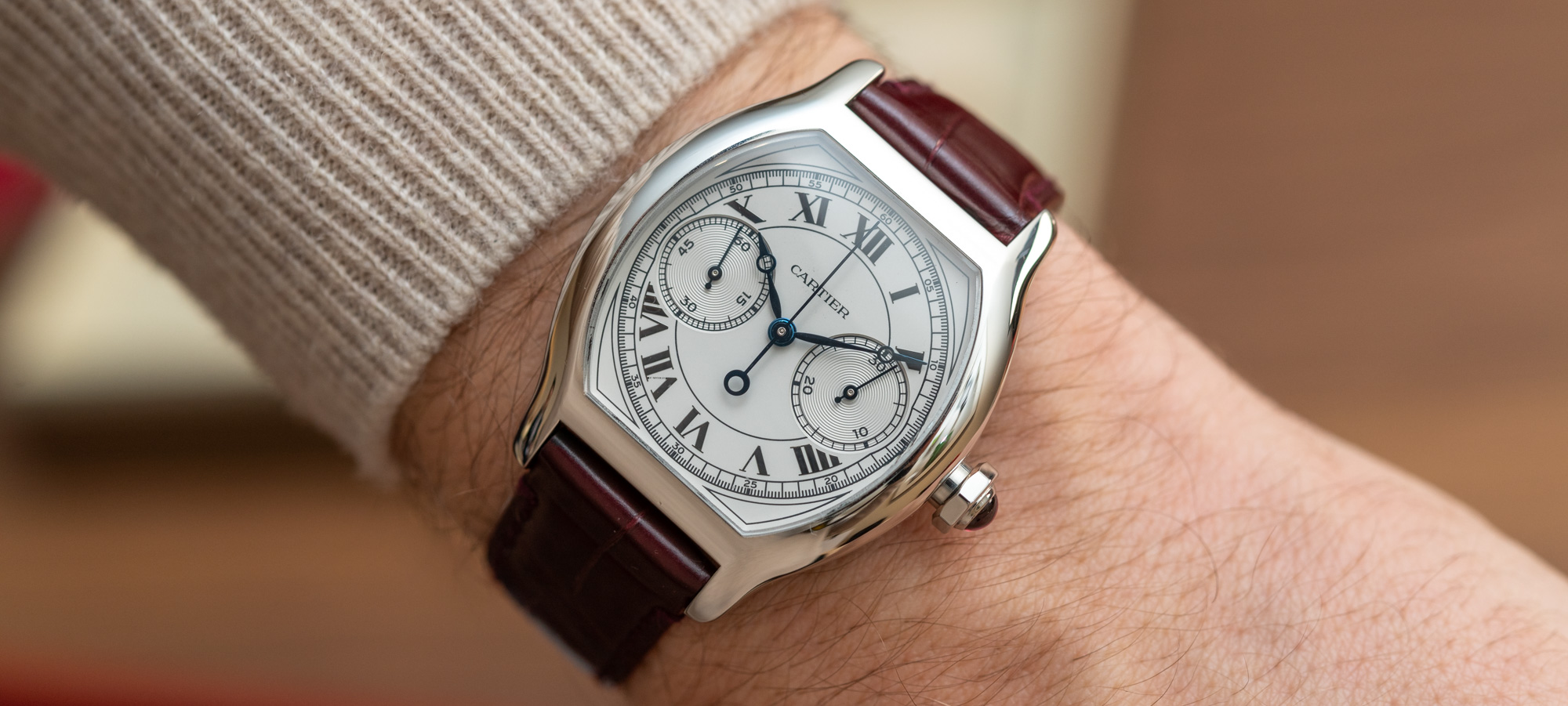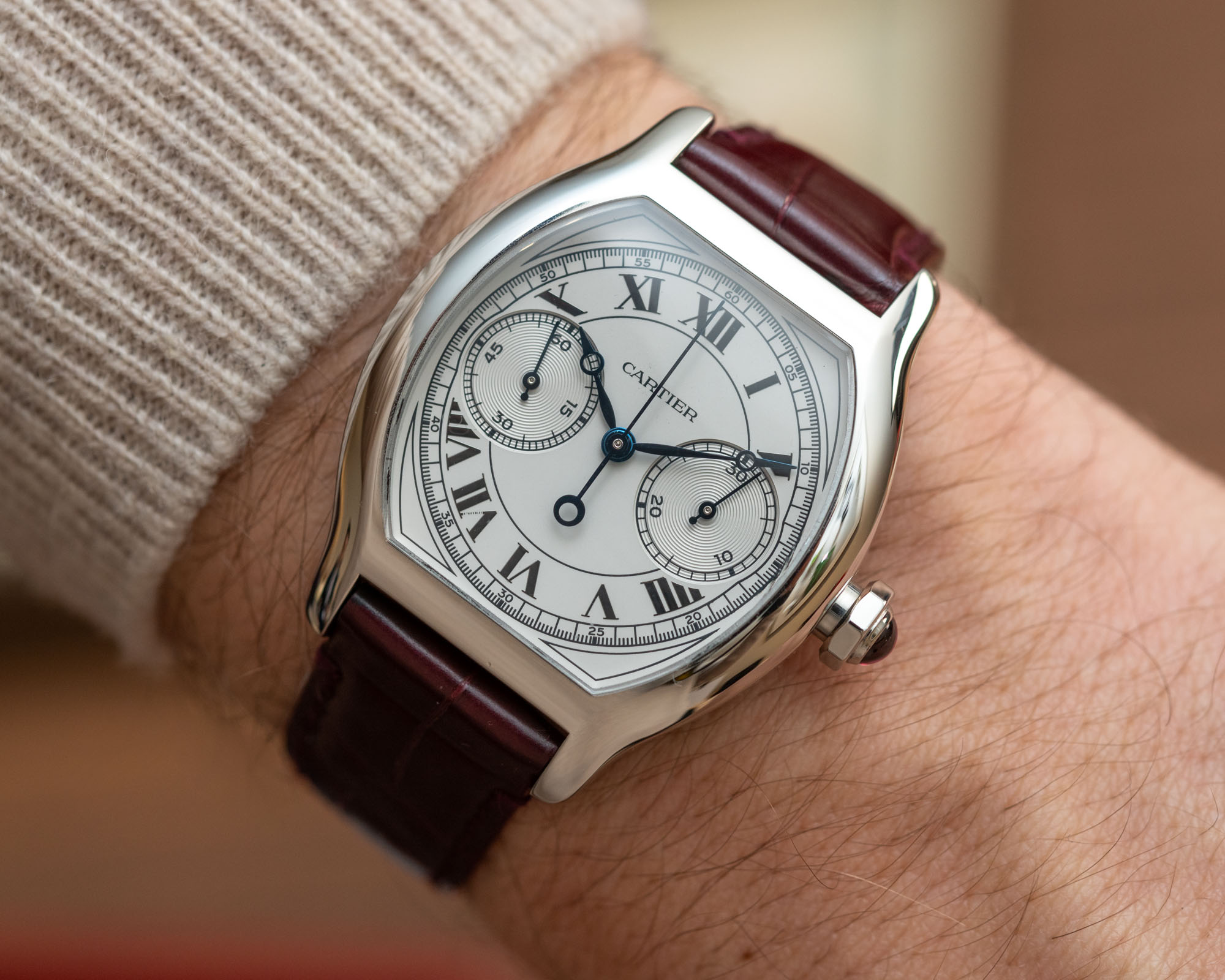
A watch I was looking forward to seeing hands-on after covering its debut here is the Cartier Privé Tortue Monopoussoir Chronograph. It is an enticing watch because it looks to be a proper, ageless, evergreen Cartier — the Tortue has been around for over a century, since 1912, to be exact — and because it is a dress watch that could potentially impress with its movement, functionality, and versatility. It could be a daily wearer. But then, its Privéness comes into the picture, and all that goes out the window.

The Cartier Privé, or Collection Privée Cartier Paris (CPCP) for an even stuffier name, is the brand’s special label slapped on watches it has chosen to revive in limited quantities from its largely unrivaled selection of everlasting collections and designs. The frustrating thing about the Cartier Privé collection is that most years it tends to offer two types of watches: Highly complex, hard to produce, and very divisive-looking pieces that, one could argue, are rightfully limited in their availability and then are soon forgotten by everyone other than the smallest fractions of dedicated collectors. The other type of watch, often launched in the Privé collection, however, is the sort that is a very strong representation of so much that can be great in a Cartier watch — effortless style, beautiful proportions, slightly and charmingly compounded functionality. The frustrating bit is that because these also receive the Privé label are highly limited in their production, and elevated in price, as opposed to being a more competitively priced regular production model that strengthened the selection of Cartier globally.

You might have guessed by now that the Cartier Privé Tortue Monopoussoir Chronograph watch, I think, belongs to that latter group of Privé watches. Cartier fails to deliver any form of reasonable argument to support the rarity and price of these watches — it is basically just “it is limited because we call it a Privé, and it is called Privé because it is limited.” A closer look at the watch itself also reveals a frankly fantastic watch, but also one without anything to it that would appear to keep it from being produced in higher quantities, and at lower prices.
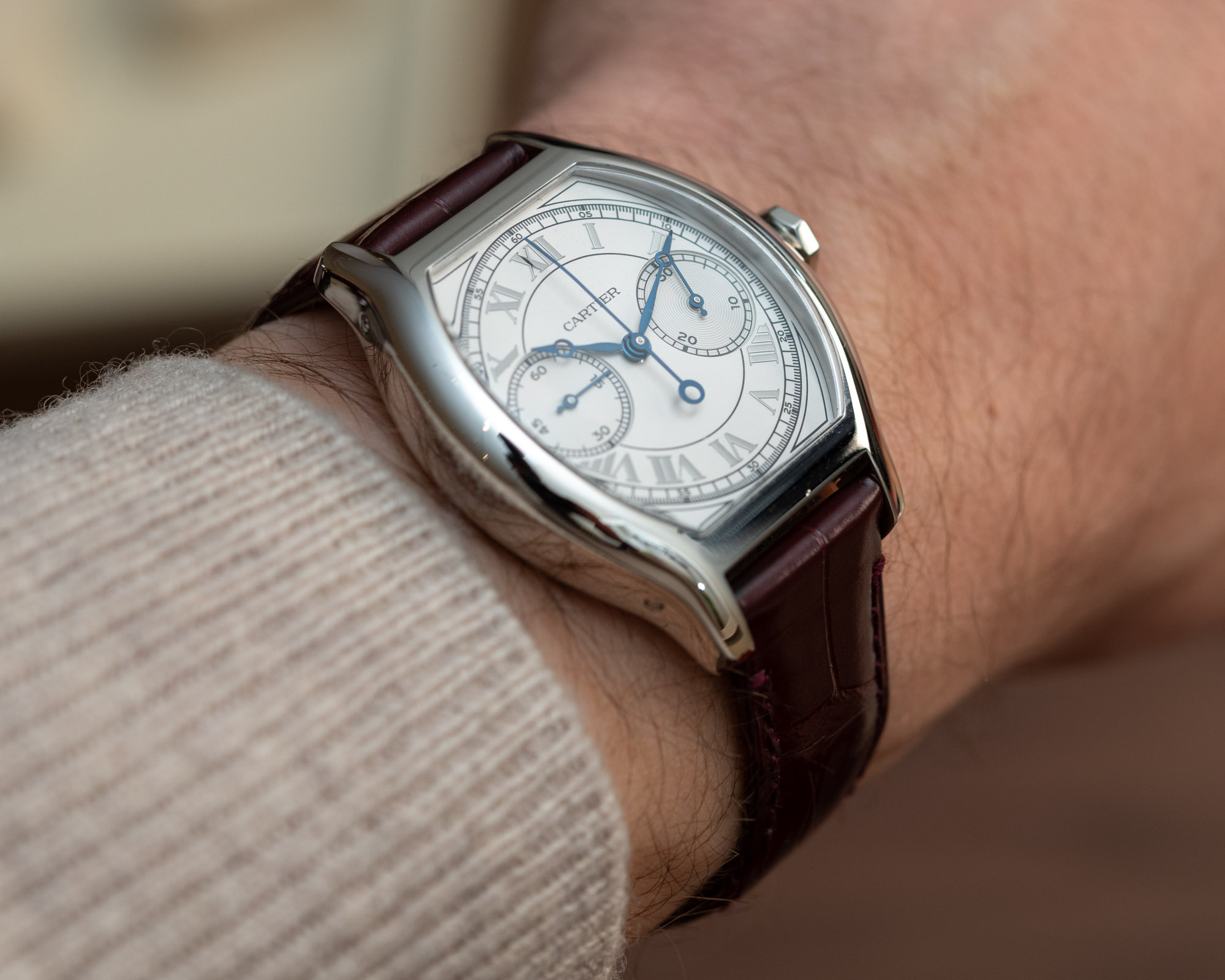
While the 34.8mm width of the Tortue Monopoussoir Chronograph might lead you to believe it is a small watch, its lug-to-lug measurement of 43.7mm means it has a relatively large footprint for its dressy-elegant genre. It is also rather slender at 10.2mm thick, and although a couple extra millimeters likely could have been engineered out of it, the Tortue case, bezel, and down-turned lugs work best when not treated with a steamroller. In platinum, as seen here, it has a lovely heft to it, too.
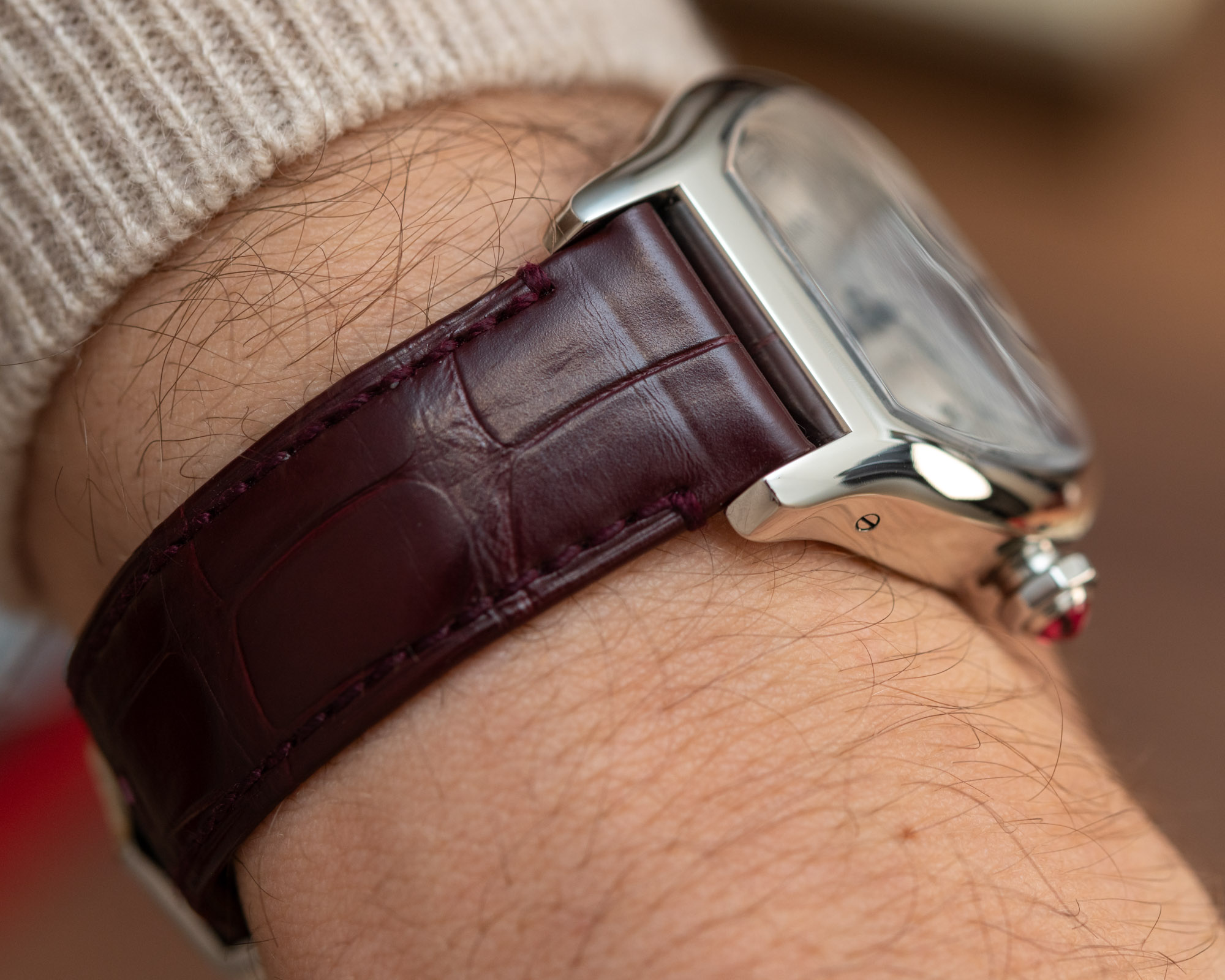
Nothing in this case design hints at a watch that was difficult to make. Yes, the middle case and the bezel are one single piece, but neither the overall shape nor its surfaces and surface treatments are anywhere close to what the competition can do with platinum — and especially 18k gold, in which the Tortue Monopusher Chronograph is also available. This is to say that on the outside there really isn’t much to suggest that this watch couldn’t be a regular-production Cartier in steel and precious metals.


The dial looks busy, but not overly so, with a few concentric circles, railroad tracks, and a bevy of Arabic and Roman numerals. None of the surface treatments, hour markers, hands, or colors are particularly special — we have seen all of these on Cartier watches offered at a tenth of this price, such as the Ronde Croisiere. For nearly $60,000, you wouldn’t be crazy to expect some guilloché or a solid gold or platinum dial. This is a basic dial for $59,000, and even for a tenth of that.

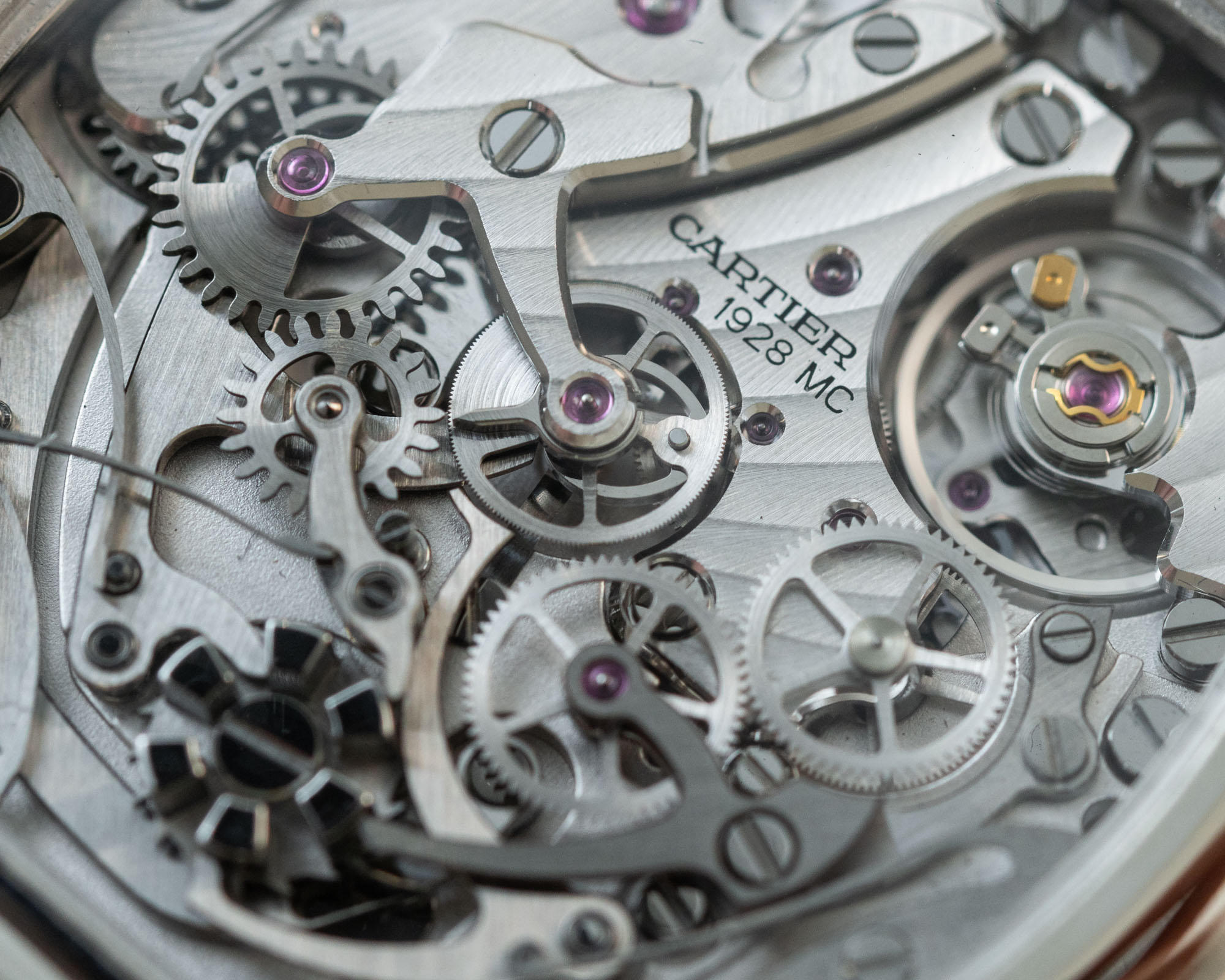
I have said this before and you probably knew this anyway: We watch enthusiasts are programmed to lust after a hand-wound chronograph with the complication fitted to the caseback side. The Cartier Privé Tortue Monopoussoir Chronograph watch reveals such a covetable caliber through a sapphire crystal caseback, and the effect is as expected — it’s what horological dreams are made of.


A closer look reveals a lot of thin beveling and some refined brushed surfaces, but the overall effect is still rather industrial and dated-looking. Many of the arms, cams, and bridges do have thin hand-refined edges, which is not something big-brand watchmakers will give you in this amount at considerably lower price points, but there isn’t much going on here either that could not be sacrificed in pursuit of a lower price point and an increased production run.

While its layout is fascinating, and Cartier does deserve credit for creating a shaped movement (one that follows the unusual shape of the case, as opposed to using a round movement), the finishing and the finer details are not exactly the sort that you just want to spend hours looking at. Last, and I hate to be banging on about this, at this price point, a free-sprung balance wheel would be much preferred to the regulating pin setup that Cartier currently offers in this Calibre 1928 MC.
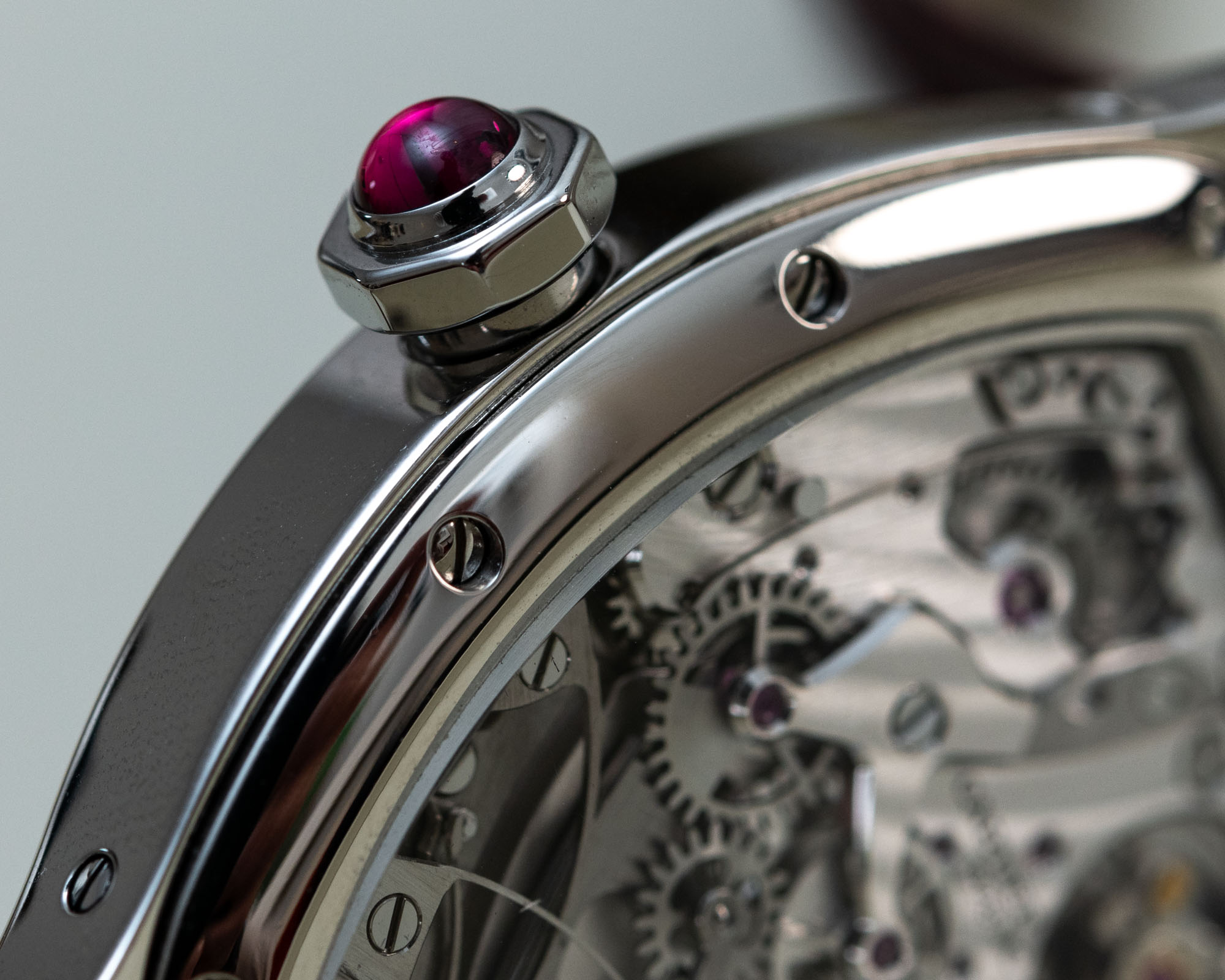
Developed with Le Cercle des Horlogers, the Cartier Calibre 1928 MC relies on a pusher integrated into the crown to start, stop, and reset its chronograph function. The crown itself is elaborately crafted from platinum with 8 facets and a ruby cabochon. Funnily enough, the cabochon is so small and rounded that it is genuinely unpleasant to apply pressure to when operating the chronograph. Power reserve is an unremarkable 44 hours and the operating frequency is 3.5Hz.

On the wrist, the Cartier Privé Tortue Monopoussoir Chronograph is a gorgeous watch. The Tortue Monopoussoir has been with us since the 1920s, and although it has become more voluptuous in that time, it has kept every bit of its class and elegance. Its shape is tense, yet organic, serious, yet approachable.
At a time when everyone, and we do mean everyone, is busy producing bulky integrated bracelet chronographs, Cartier could have had a moment in the limelight by bringing style to what has become an ungainly genre of watches. The Tortue could have been the savior of the $15,000 (give or take a few grand) chronograph, and Cartier could have spearheaded the movement away from try-hard chronographs that are as heavy on the eyes as they are on the wrist. Instead, it created an expensive and needlessly limited chronograph for the top 0.1% — apparently betting on them not seeking that much value, either.
The Cartier Privé Tortue Monopoussoir is priced at $59,000 USD in platinum (Ref. WHTO0008) and $51,000 USD in yellow gold (Ref. WHTO0007), both limited to 200 pieces. You can learn more at the brand’s website.

